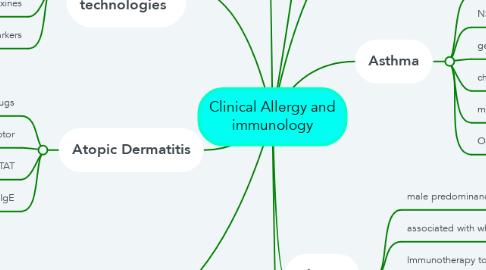Clinical Allergy and immunology
by carmen maria


1. high prevalence
2. risk factors
3. application of new technologies
3.1. OMICS
3.2. novel, targeted therapies
3.3. cytocxines
3.4. biomarkers
4. Atopic Dermatitis
4.1. anti-inflammatory drugs
4.2. L-13, the IL-4/IL-13 receptor
4.3. TSLP, JAK/STAT
4.4. CRTH2, and IgE
5. Unraveling Urticaria
5.1. recomended Omalizumab, an anti-IgE antibody,
5.2. efficacy 80%
6. impact on physical and psychological health,
7. Asthma
7.1. not associated with smoking
7.2. NSAIDs)
7.3. genotypes as shown for HLA class I and II
7.4. chronic inflammatory disease
7.5. marker of eosinophilic inflammation
7.6. Omalizumab
7.6.1. blocking IL-5

